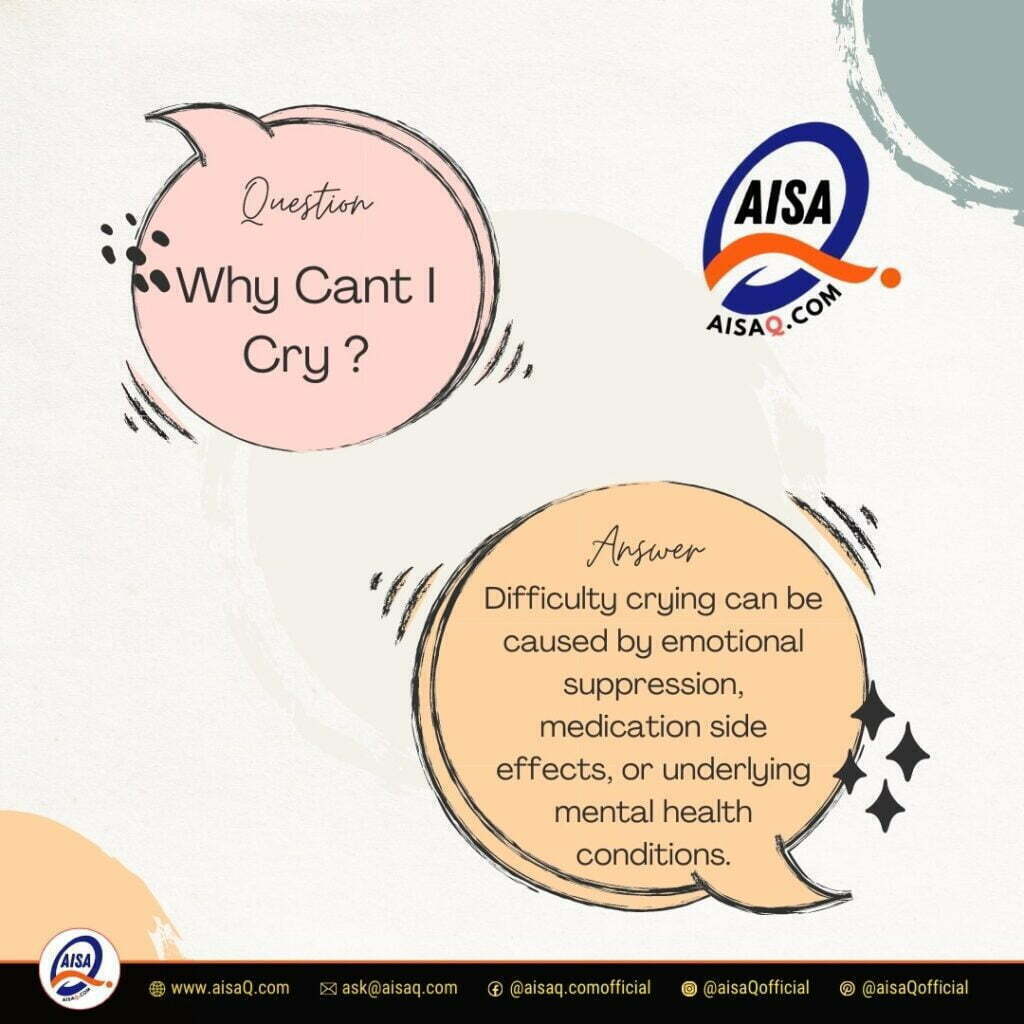Crying is a natural human response to a range of emotions, from sadness to joy, anger, and frustration. It’s a release of emotions that allows us to feel better and move forward. However, some people may find it difficult to cry, even when they feel overwhelmed with emotions. This can be a confusing and frustrating experience, leaving individuals wondering, “why can’t I cry?” In this article, we’ll explore some of the reasons why someone may struggle to shed tears and what they can do to work through it.
Table of Contents

Why Can’t I Cry? Understanding the Science and Emotions Behind the Tears

The Psychology Behind Crying
Crying is a complex emotion that is closely tied to our psychological wellbeing. Tears can be a sign of sadness or joy, but they can also represent a release of pent-up emotions. People who find it challenging to cry may be dealing with a range of psychological factors, such as anxiety, depression, or trauma. These emotions can make it challenging to access our feelings and express them outwardly.
The Physiology of Crying
Beyond our psychological state, crying is also a physiological response that requires a specific set of circumstances to occur. Tears are produced by the lacrimal gland, which is located in the eye. These tears are then released through the tear ducts when we experience certain emotions. However, there are times when this process can be disrupted, leading to a lack of tears. In some cases, medical conditions such as Sjogren’s syndrome or hormonal imbalances may be at play.
Coping with the Inability to Cry

If you find it difficult to cry, there are several strategies you can use to cope with these emotions. One option is to talk to a mental health professional who can help you explore the reasons behind your lack of tears. They can help you work through any psychological factors that may be hindering your ability to cry. Additionally, engaging in activities such as meditation or yoga can help you access your emotions and promote relaxation.
Other Strategies to Promote Crying

For some individuals, crying may be more difficult due to the environment they are in. For example, being in a high-stress environment or surrounded by people who are dismissive of emotions can make it challenging to cry. In these situations, creating a safe space that promotes vulnerability and encourages emotional expression can help individuals feel more comfortable shedding tears. It may also be helpful to engage in activities that promote emotional expression, such as journaling or art therapy.
FAQs
Why Cant I Cry?
This is a difficult question to answer. A lot of people have different answers to this problem. One things that I might recommend is talking to someone about your emotions and how you are feeling.
Can medication impact my ability to cry?
Yes, some medications, such as antidepressants, can impact an individual’s ability to cry. These medications work by regulating the release of certain chemicals in the brain that can affect our emotions.
Is it normal to not cry?
Yes, it’s entirely normal for some individuals to not cry regularly. However, if you find yourself struggling to cry in response to situations that would typically elicit tears, it may be helpful to explore the reasons behind this.
Conclusion
Crying is a natural human response that allows us to process emotions and move forward. However, some people may struggle to shed tears, leaving them feeling confused and frustrated. By exploring the psychological and physiological factors that impact our ability to cry, we can begin to understand the reasons behind this phenomenon. Whether it’s through talking with a mental health professional or engaging in activities that promote emotional expression, there are strategies available to help.


